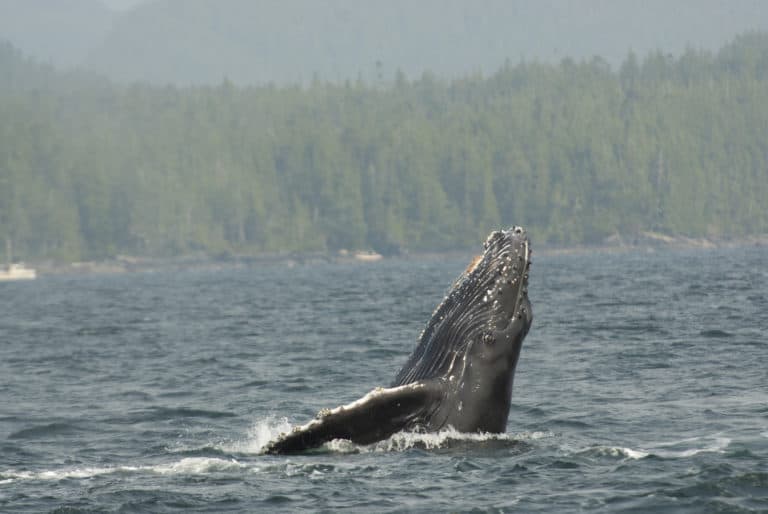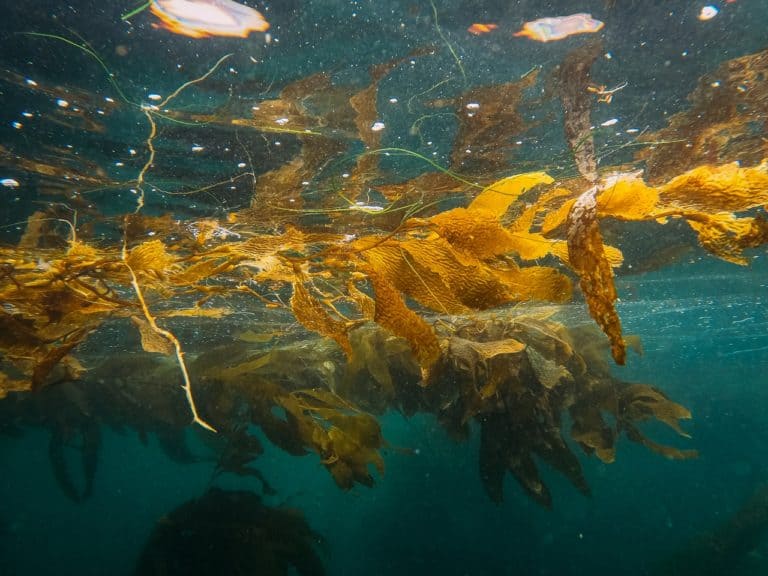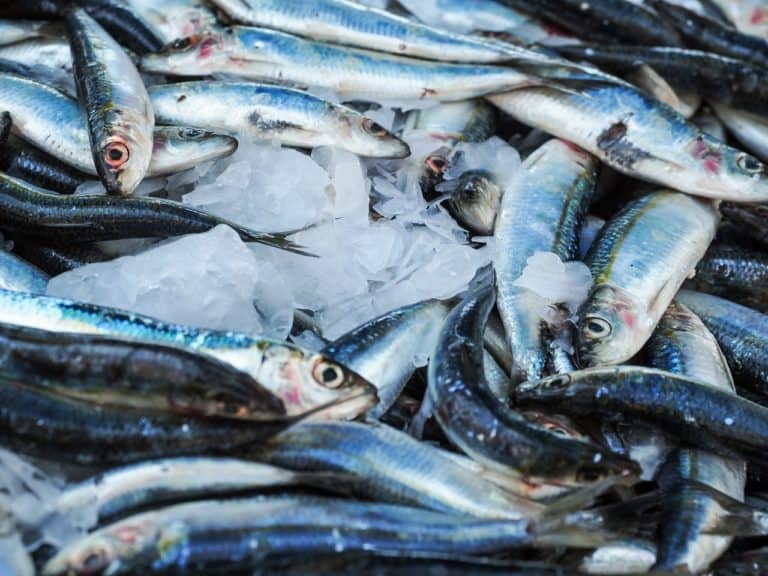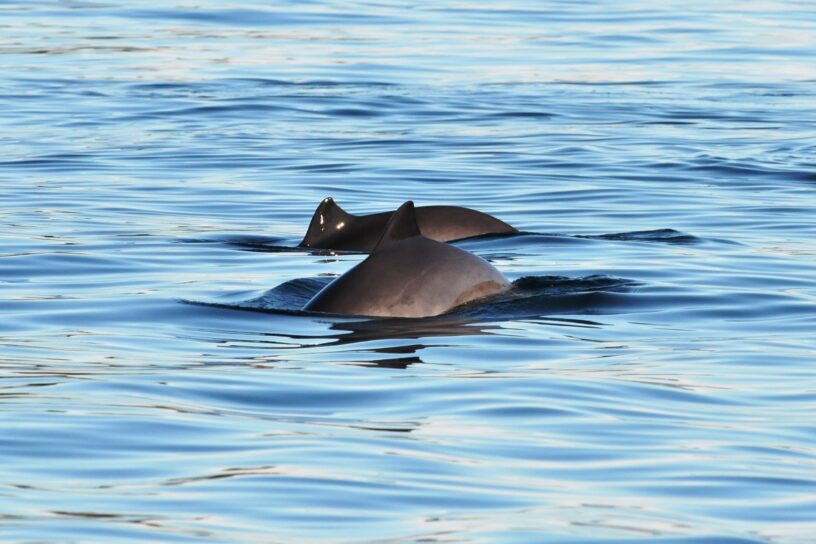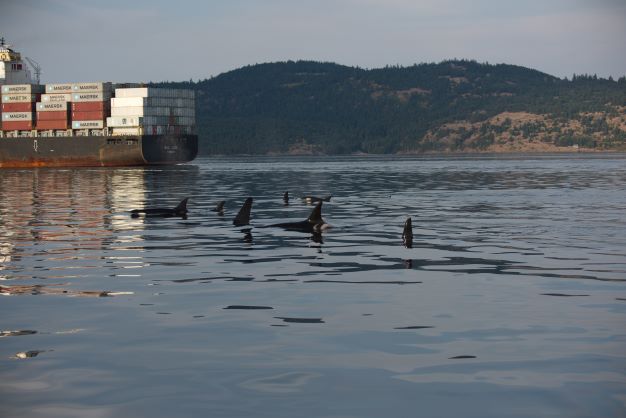
From the Field Blog #2 “It’s all in the genes – Using Environmental DNA to study whales”
The Ocean Wise Whale Team has had a busy field season. This is the second in a series of four blog posts from the team on the North Coast. Stay tuned to our social media account for parts 3, and 4!
Science is always evolving, but a particularly exciting new research technique has been emerging to study marine animals. The problem with monitoring whales and other marine animals is that they spend majority of their time out of sight under the water, so having a tool to determine if they are there without having to see or hear them would be very beneficial. Sounds too easy, right? Wrong! Environmental DNA (eDNA) is the collection of genetic material taken from the environment. Just like you and I, animals shed their DNA constantly into their environment and we are able to pick up on their presence or absence through this shed DNA, in a much less invasive way than traditional methods such as skin biopsies. For marine animals, their environment is the ocean, meaning collecting their eDNA is as simple as collecting samples of seawater. eDNA samples allow scientists to look for the presence of a single species like humpback whales or harbour porpoises by using specific primers – which are short genetic sequences with a unique code that will only bind to the species you are looking for. eDNA can also be used to detect multiple species in an ecosystem through using primers that attach to the DNA of multiple species in a process called metabarcoding. The latter helps us understand biodiversity and how it changes over time.

Despite how straightforward collecting and detecting eDNA, as with any method, there are a few catches to using this approach for marine mammals. Firstly, when collecting eDNA, human DNA and other non-target DNA can easily get into the water sample you are collecting, which can interfere with results. Therefore, it is very important to reduce the amount of this DNA contamination by sterilizing all tools using something as simple as bleach solution and ensuring that gloves are worn when collecting samples. Secondly, the application of eDNA to study whales is currently poorly understood. Whales shed DNA all the time through their skin, their mouths, their feces, etc., but DNA in the ocean can be scattered by currents, tides, and waves. Even the water temperature and amount of sunlight can affect how long the DNA will be stick around in the ocean for! And of course, whale movement is pretty unpredictable. To help understand how whale eDNA sampling works, we have taken on a few projects in the North Coast. There are two ways we collected eDNA samples this year and we will take you through them both.
We began conducting DNA-based work on marine mammals in the North Coast by collecting opportunistic “flukeprint” samples from both humpback whales and harbour porpoises. As whales dive, they often leave a visible circle in the water (a break in the surface tension) where they last were at the surface. This is the perfect place to collect an eDNA sample. From this, we can even determine the sex of the animal. We have collected almost 70 flukeprint samples from this summer alone! If we are lucky, they will leave something else behind for us as well. You may look at the picture below and wonder what on earth it is… cotton candy? Brains? Meat? The answer is arguably far more exciting (and smelly). This is humpback whale poop. Collecting fecal samples is another very opportunistic way of collecting DNA. It doesn’t happen often but when it does, we certainly don’t shy away from it.
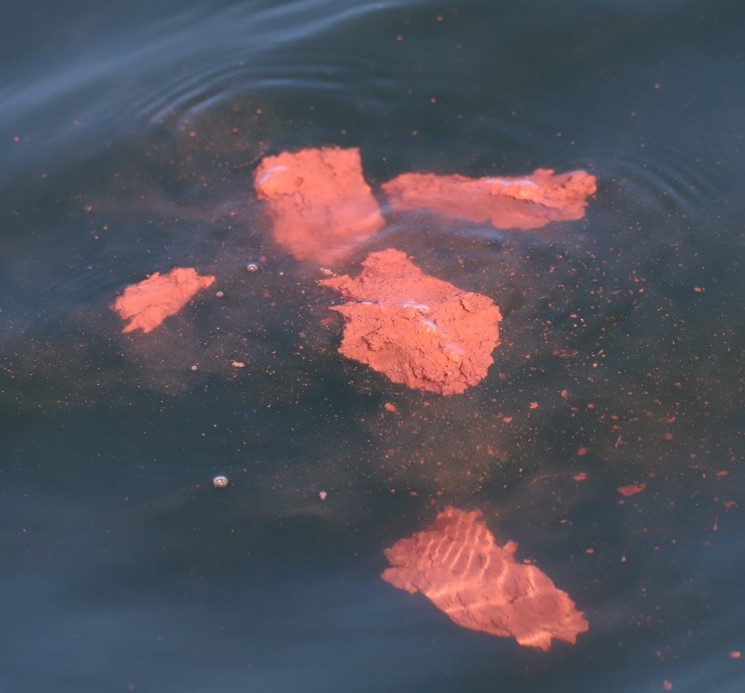
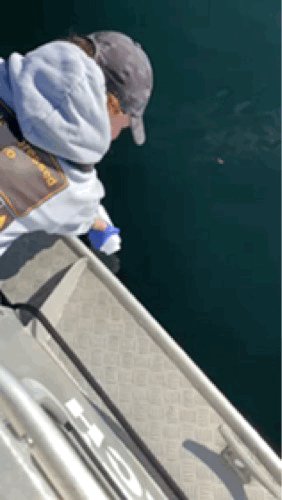
Building off of our success with flukeprint and fecal DNA studies, more recently we have been conducting a pilot study, looking at the feasibility of detecting eDNA from water samples. For this, we have been collecting water samples at 15 set stations around the waters of Chatham Sound, in Northern BC, at ~1.5 m depth using a 2-meter-long pole. At the same time, we listened for whales using a hydrophone, and visually surveyed the water for them as well to allow us to compare results of presence with eDNA. We did this four times between the months of June – October, and we will use these samples to see if we can determine presence of humpback whales and harbour porpoises in the area using a single-species DNA approach. We are excited to see how the eDNA results compare with visual and acoustic detections across the stations!

For both flukeprint samples and station eDNA samples, once we have collected all our samples and filtered them through the eDNA Citizen Science Sampling pump (as seen above), we then extract the filter paper and preserve it in small test tubes to be sent to our lab in Vancouver. There, the scientists can extract DNA and using a qPCR machine, can screen our samples for our species of interest. The data that we have collected this summer allows us to determine the best methodology to use to collect eDNA from whales, better understand the population dynamics of whale species in the North Coast, determine sex-ratios of whales in the north and even to identify whales down to the individual level. Stay tuned for lots of cool eDNA research in the future!
Posted December 9, 2022 by Nic Schulz

